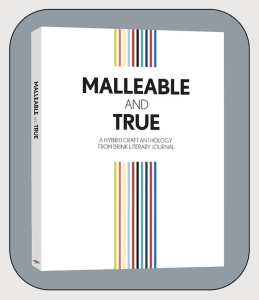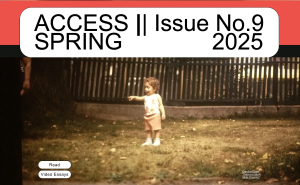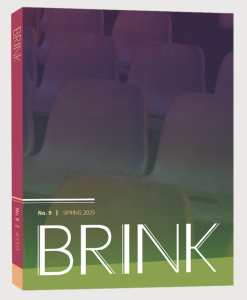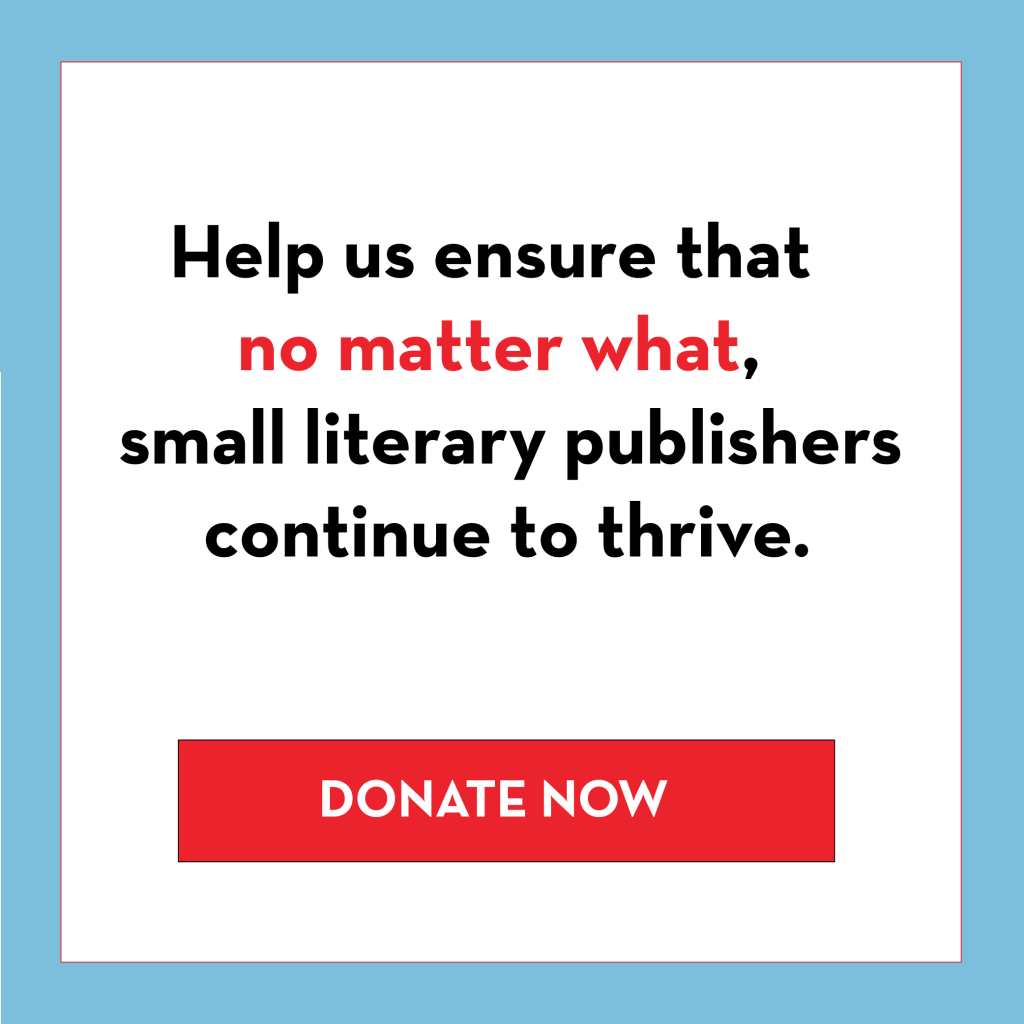We spoke with Alisha Jeddeloh, founding fiction editor of Brink Literary Journal and editor in chief of Brink Books, in our latest Member Spotlight.
 What is the history behind Brink? When was it founded and what is its mission?
What is the history behind Brink? When was it founded and what is its mission?
Brink is a nonprofit independent publisher of hybrid writing. Through our publications, we create space in the literary world for hybrid, cross-genre, and unclassified works by emerging and established writers and artists. We started as a journal in 2020, publishing our first two issues in 2021. We knew there was a gap in the literary world for publishing hybrid writing, and we knew writers whose boundary-pressing work we wanted to put into print, but we hadn’t published a journal before so the process was new. When the journal was nominated for CLMP’s 2022 Firecracker Award in the category of Magazines/Best Debut, we knew we were onto something.
This May, Brink officially launched Brink Books “to cultivate a space that publishes and celebrates long-form hybrid writing.” Congratulations! Can you tell us more about what went into the decision to branch out into longer-form works? Why was this important to you?
Thank you—we’re excited! I began as the fiction editor at the journal, but I’ve been editing for a couple of decades now, and most of my work has been in books. From the beginning, I was interested in what the long form has to offer. As an editor and reader, I find there’s something so satisfying about going deep into a long work or a collection focused on a single idea. We’ve also heard from many of our brilliant contributors and readers that they’re having a difficult time placing their hybrid manuscripts, and we’re looking forward to sharing books like theirs with the world.
 Can you tell us more about the first book forthcoming from Brink Books: Malleable and True: A Hybrid Craft Anthology?
Can you tell us more about the first book forthcoming from Brink Books: Malleable and True: A Hybrid Craft Anthology?
Malleable and True: A Hybrid Craft Anthology, coming this September, is a dynamic, innovative collection for readers, writers, and educators that explores the complexity and craft of hybrid writing. It breaks open the concept of hybridity, finding space both inside genre and outside its boundaries.
When we started talking about publishing books, I immediately had the idea of creating an anthology that shares some of our favorite work from the journal. We didn’t just want to reprint a catalog of greatest hits, though; we wanted to bring something new to the table. We have so many readers and writers who are intrigued by hybrid writing but feel intimidated—the very things that make hybridity exciting, like its break with traditional forms, make it slippery and hard to define. So we asked our contributors to create new work that reengages with the original, like process notes, related pieces, or interviews, plus reflections on hybridity and generative prompts for creating hybrid work.
What we’ve ended up with is not only an accessible resource for anyone passionate about boundary-pressing work but also an interactive experience designed to engage readers through critical thinking and creative expression. Because we need the bulk of the capital up front to cover printing costs, we’re turning to Kickstarter to make this possible—we’re running a campaign through May 31 that will allow us to raise the funds we need in a way that’s both community-driven and transparent. We’ve been thrilled with the support we’ve received so far. I think it just goes to show the need for boundary-breaking work that’s both art and a craft resource.
What are some of the rewards and challenges of publishing hybrid writing and unclassified works?
As hard as it is to find a home for hybrid pieces in journals, it’s that much more difficult to publish full-length manuscripts. Part of that is because publishing hybrid work can be very labor intensive and thus expensive. Luckily we have an amazing designer who’s willing to go out on a limb with us and figure out the best way to represent unusual work on the page. The reward is opening up the journal or book and seeing something totally new and different, which in turn inspires the reader to think about the work and the larger subject in a new way.
What are some other presses and literary journals you admire that publish hybrid, cross-genre work?
We’re big fans of publishers like Fonograf Editions, Fence, and DIAGRAM. Rose Metal Press and the University of Nebraska Press both have amazing anthologies that have done so much work to elevate hybrid writing.
 How can interested writers submit their work to the journal, and to Brink Books?
How can interested writers submit their work to the journal, and to Brink Books?
For both the journal and the imprint, we’re interested in work that presses boundaries by using more than one medium to tell a story; work that looks and feels different on the page.
Brink Books is officially open for submissions from May 1 to September 1, 2025! We welcome submissions of finished cross-genre, hybrid, and visual hybrid manuscripts via Submittable. A great way to learn more about the type of work we love is to read an issue of the journal and some of our public access pieces on our website.
Agented and unagented submissions are welcome. We do accept translated work.
The journal has two reading periods per year: January and July. Through Submittable, we accept a variety of creative work, including nonfiction, fiction, poetry, and translation, but our hearts beat strongest for hybrid work. Each issue has a theme, and this July we’re looking for work that engages the theme of being on the brink of obsession. Once a year we also offer an Emerging Writer Fellowship in Hybrid Writing and an Award for Hybrid Writing.
Submissions are always free, and we pay our contributors!
What distributor is Brink Books working with? How can bookstores and libraries find and order your titles?
Until this point, we have run the entirety of Brink’s operations out of a spare closet in our publisher’s house. For now, journal issues, subscriptions, and merch can be found on our website, and beginning in the fall of 2025, Brink Literary Journal and Brink Books will be distributed through Itasca Books in Minneapolis.
Are there any indie bookstores (or libraries) that you think do a particularly good job featuring titles from indie publishers? If so, what do they do?
We’re based in Iowa City, and our local bookstores—Prairie Lights, Sidekick Books, and even the local Barnes & Noble—have been more supportive than we could have dreamed. They not only carry our publications but highlight them for customers and help with events. We’re also fortunate to have a fantastic public library here. I’m often pleasantly surprised by the books they carry from indie publishers, and they’re very responsive to patrons’ book requests—they’ve purchased every book I’ve ever requested.

